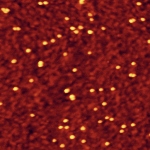 |
Sample: 30 nm gold
clusters on a
Au(111)-surface
Scan range: 2 µm x 2 µm
Height scale: 35 nm
Tip: DP15/HiRes/AlBS (MikroMasch)
Sample courtesy: Mr. Plutowski,
University of Karlsruhe |

|
Sample: Porous
alumina
Image range: 3 µm x 3 µm
Height scale: 940 nm
Mode: dynamic non-contact
Tip: DP15/STING/AlBS
Sample courtesy: MPI Halle |
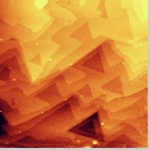 |
Sample: Atomic steps on a mica surface
Scan range: 5 µm x 5 µm
Height scale: 2.5 nm
Tip: NSC15/AlBS
Sample courtesy:
TU Chemnitz |
 |
Sample: UMG01
Scan range : 500 nm x 500 nm
Height scale: 5nm
Mode: dynamic non-contact
Tip: NSC12/C
Sample courtesy: Anfatec
The linear arranged pollutions, which can always be
found in
the middle of the upraised area, are typical for the grating UMG01. As
shown in the picture, they consist of single, diffuse
arranged
dots. |
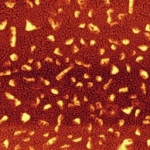 |
Sample: 75 nm Alqb on silicon
Scan range: 3 µm x 3 µm
Height scale: 47 nm
Mode: dynamic non-contact
Tip: NSC15
Sample courtesy: TU Braunschweig
|
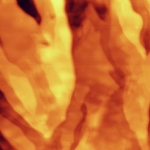 |
Sample: Printable polymer
layer before etching
Image range: 3 µm x 3 µm
Height scale: 147 nm
Mode: dynamic non-contact
Tip: NSC15
Sample courtesy: TU Chemnitz |
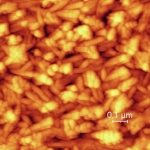 |
Sample: ITO on silicon
Scan range: 1 µm x 1 µm
Height scale: 26.4 nm
Mode: dynamic non-contact with 100 mV drive
Tip: NSC15/HiRes/AlBS
Sample courtesy:
Anfatec |

|
Sample: Printed metal dot on silicon
Scan range : 1 µm x 1 µm
Height scale: 77 nm
Mode: dynamic non-contact
Tip: NSC15
Sample courtesy:
University of Duisburg-Essen
|
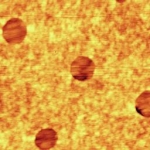 |
Sample: Test of e-beam
lithography on an Au-layer
Scan range: 2 µm x 2 µm
Height scale: 4 nm
Mode: dynamic non-contact
Tip: NSC15/STING
Sample courtesy: TU Chemnitz |
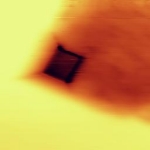
|
Sample: Etched pitch in a dopant pattern
Scan range : 1 µm x 1 µm
Height scale: 347 nm
Mode: dynamic non-contact
Tip: NSC15/STING
Sample courtesy:
TU Chemnitz
|
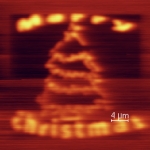 |
Sample: 20 nm thermical oxide on n-Si(100)
Kelvin-potential image
Mode: dynamic mode with electrical excitation and
Kelvin Feedback
Sample courtesy: TU Chemnitz, Carsten Mädler
(AG H.
Graaf)
The structures were created by
applying voltage pulses.
|



